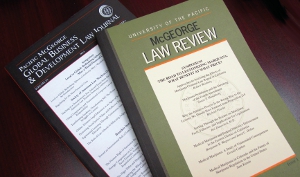An Examination of Patents, Licensing, Research Tools and the Tragedy of the Anticommons in Biotechnology Innovation
Document Type
Article
Publication Date
2004
Abstract
The continued development of and affordable access to potentially life saving pharmaceuticals, gene therapies and diagnostics is unquestionably a socially important issue. However, crafting government policy to encourage the development of and allowing affordable access to those services and products is difficult. On one hand, the development of those services and products requires a large investment of funds because of the complexity, collaborative nature, and uncertainty of the development of those products and services. Accordingly, investors require the safety of strong and stable patent rights to ensure a return on their investment in the development of a commercial end-product or a research tool. On the other hand, patents may foreclose competition for a particular product or service and enable a company to exact a supra competitive price for that product or service, thus denying access to people unable to afford that product or service. In arriving at that supra competitive price, the company selling the commercial end product may have to include in that price a number of additional costs imposed by holders of patented research tools needed in the development of the commercial end-product.
This Article examines whether the development of pharmaceuticals, gene therapies or diagnostics is being stifled by the inability of companies to access proprietary research tools needed for the development of those important products and services. This Article also evaluates proposals for alleviating problems in accessing proprietary research tools, and proposes recommendations to aid in the efficient transfer of that technology. First, this Article recommends that Congress enact a law similar to the proposed Genomic Science and Technology Innovation of Act of 2002, which requires the government to conduct a study of the effect of government policy on biotechnology innovation. Second, this Article recommends that the government encourage public and private parties to enter patent pools to efficiently transfer rights in biotechnology inventions. The government, in conjunction with private and public institutions, should create a publicly available database of proprietary research tools and licenses concerning those tools. The government should also modify the provision of the Bayh-Dole Act concerning reservation of a nonexclusive right to practice any patented invention created with federal funding. The modification would allow the government to transfer a non-exclusive license to a patented research tool developed with government funding to a patent pool created by industry participants if it is demonstrated that the owner of the patented research tool is unreasonably withholding the license of that tool from the pool. Any royalties resulting from the licensing of the research tool in the patent pool will be distributed to the owner of the patented research tool.
Part I of this Article provides definitions for research tools and commercial applications. Part II discusses the costs, benefits, and purposes of patent law. Part III reviews university and private research and development, including the influence of the Bayh-Dole Act. Part IV examines the development of commercial applications of biotechnology research, including the role of venture capital and the use of licensing provisions requiring reach through royalties and exclusivity. Part V evaluates problems that may occur in attempting to develop commercial applications and licensing patents. Part VI reviews the Tragedy of the Anticommons theory. Part VII discusses research and analysis concerning the existence of the anticommons problem. Part VIII examines and analyzes potential solutions for solving the Tragedy of the Anticommons in biotechnology. Finally, Part IX offers recommendations for addressing an existing or developing Tragedy of the Anticommons.
Publication Title
University of Michigan Journal of Law Reform
ISSN
0363-602X
Volume
38
Issue
1
First Page
141
Recommended Citation
Michael S. Mireles Jr.,
An Examination of Patents, Licensing, Research Tools and the Tragedy of the Anticommons in Biotechnology Innovation,
38
U. Mich. J.L. Reform
141
(2004).
Available at:
https://scholarlycommons.pacific.edu/facultyarticles/536



